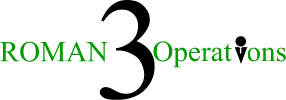All SALT Results and Strategies
QUIZ #1
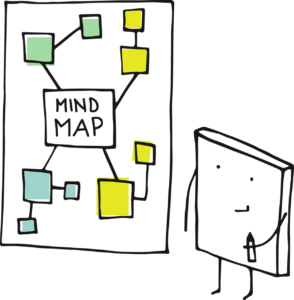
Visual Preference
You process information best through VISUALS. Which means your ideal learning environment is when information is expressed through visual examples or provided in a colourful format.
Some strategies could look like:
- Watching videos – try taking screenshots of graphs or charts that explain information so you can refer to them later.
- Taking notes – try using different fonts, colour coding, and/or highlights to separate and organize your information.
- Listening to a podcast or audio lecture – try arranging the information into diagrams or graphs like timelines, pyramids, hierarchies, or cycles.
- Reading a lot of text – try to copy the text into a separate word document and insert your own relevant graphics around the text to highlight key information.
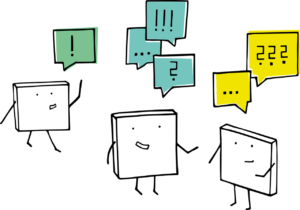
Audio Preference
You process information best through AUDIO. Which means your ideal learning environment is when information is explained to you verbally.
Some strategies could look like:
- Watching videos – if the video does not require watching demonstrations, try leaving the video running in the background for the sound while you take notes, so you are less distracted.
- Taking notes – try recording yourself reading them to listen later. If possible, record the lesson.
- Using a lot of charts and graphs- talk to someone or record the explanation of the meaning and significance of the info.
- Reading a lot of text – ask someone to read it to you or copy it into a text to speech program so it can read the information to you. If possible, find audio book versions.
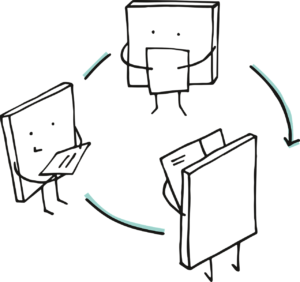
Reading Preference
You process information best through READING. Which means your ideal learning environment is when information is written out in a clear and easy to follow format.
Some strategies could look like:
- Watching videos – try turning on the subtitles or asking for a transcript of the video.
- Using a lot of charts and graphs – write a short summary of the main points below, so you can quickly refer to it.
- Listening to a podcast or lecture – organise what they are saying in your own categories and lists.
- Someone is explaining something to you – write your own step-by-step instructions as they speak.
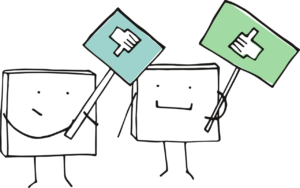
Modelling Preference
You take information in best through MODELLING. Which means your ideal learning environment is when you are shown how to do something, then you get to try it our yourself. This can be a challenge in online learning. You may need to lean more on your secondary preference.
Some strategies could look like:
- Watching videos – make notes of tips, strategies, and actions you can try later, if needed look for additional videos that provide step-by-step guides or walkthroughs.
- {“type”:”block”,”srcIndex”:4,”srcClientId”:”596b26c2-2503-4322-a116-d50c8423fdeb”,”srcRootClientId”:””}Using a lot of charts and graphs – try to explain the information to someone or in a video to watch later.
- Listening to a podcast or audio lecture – try to pause the explanation so you can practice the instruction that is being modeled to you
- Reading a lot of text – try to turn the information into instructions or into step-by-step guides that will let you physically apply the information.
- Try to relate information to things you already know. Think through the information with expressions like: “it’s kind of like when….” or “it’s like, if so and so did this…and then we did this…”
Quiz #2

Social and Active Preference
You process information through SOCIAL INTERACTIONS and IMMEDIATE USE. Which means your ideal learning environment is when you are learning with others and can experiment with the new information.
Some strategies could look like:
- During or after your class – talk to other people about the information and how it could be used in real life situations.
- Work with others to find meaningful ways of applying the information – this could include testing the applications through trial and error.
- Talk out your thinking during and after the class with others – consider role playing or having conversations where you try to figure it out together.
- Be open to making mistakes and starting over when trying out the learning – processing the information is about the journey, not the results.
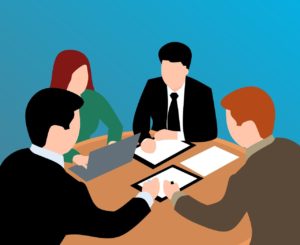
Social and Reflective Preference
You process information through SOCIAL INTERACTIONS and CAREFUL CONSIDERATION. Which means your ideal learning environment is when you are learning with others and can talk over the information and look for larger connections and meaning.
Some strategies could look like:
- During or after your class – talk to other people about the information and how it connects to other ideas or methods.
- Work with others to find meaningful ways of connecting the information – this could include throwing out ideas and possibilities out and seeing where those conversations take you.
- Talk out your thinking during and after the class with others – consider debating the different sides of issues and getting different perspectives.
- Be open to conversations that do not lead anywhere or give up on ideas that do not pan out – processing the information is about the journey, not the results.
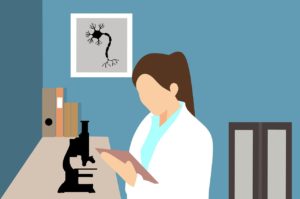
Solitary and Active Preference
You process information through INDIVIDUAL EFFORTS and IMMEDIATE USE. Which means your ideal learning environment is when you are learning alone and can experiment with the new information.
Some strategies could look like:
- After your class – look for options and strategies of how the information could be used in real life situations.
- Record yourself or journal meaningful ways of applying the information – this could include testing the applications through trial and error.
- Write down or record your thoughts about how this information could be useful and what applying it could look like.
- Be open to making mistakes and starting over when trying out the learning – processing the information is about the journey, not the results.

Solitary and Reflective Preference
You process information through INDIVIDUAL EFFORTS and CAREFUL CONSIDERATION. Which means your ideal learning environment is when you are learning alone and can look for larger connections and meaning.
Some strategies could look like:
- After your class – look for options and strategies of how the information connects to other ideas or methods.
- Record yourself or journal about meaningful ways of connecting the information – this could include reviewing the information from different perspectives and seeing what ideas come to light.
- Write down or record your thoughts about how this information could have alternative solutions and could look different from other perspectives.
- Be open to thoughts that do not lead anywhere or give up on ideas that do not pan out – processing the information is about the journey, not the results.
Quiz #3

Senses and Emotion Preference
You connect and remember information through WHAT’S REAL and YOUR HEART. Which means your ideal way of accepting and holding on to new information is through getting tangible material and connecting it with memories and feelings.
Some strategies could look like:
- While you are in the class – make sure to ask questions so you can trust the information you receive is clear and complete.
- While learning new information – make sure the information comes from trustworthy sources, think about past experiences or memories where it would have been helpful to know it.
- Sometimes our negative experiences; like stressful situations, embarrassing moments, and awkward events can be powerful anchors for our learning.
- Look to relate the learning to emotions and memories – create funny rhymes to unmemorable elements, try to connect the facts with things that evoke feelings, such as music, pictures, or people.
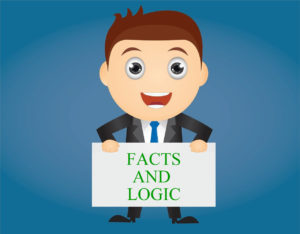
Senses and Reasoning Preference
You connect and remember information through WHAT’S REAL and YOUR HEAD. Which means your ideal way of accepting and holding on to new information is through getting real and tangible material and connecting it rule and logic.
Some strategies could look like:
- While you are in the class – make sure to ask questions so you can trust the information you receive it clear and complete.
- While learning new information – make sure the information is fact and comes from trustworthy sources, then think about the rules and processes that they relate to. Try to fit the new information into your existing knowledge and understanding.
- Sometimes logic and reason can give us structure; logic is about trying to figure out the rules of life, if we can find a way to fit new information into these rules, we can retain and recall the information much easier.

INTUITIVE and Emotion Preference
You connect and remember information through WHAT’S POSSIBLE and YOUR HEART. Which means your ideal way of accepting and holding on to new information is through understanding what is possible and connecting it with memories and feelings.
Some strategies could look like:
- While you are in the class – make sure to be open minded and ask questions that explore ideas and potential. The information needs to be trustworthy and value the big picture.
- While learning new information – be inspired by new ideas and opportunities, you are as interested in what could be, as you are in what is there now.
- Sometimes our negative experiences; like stressful situations, embarrassing moments, and awkward events can be powerful anchors for our learning. Try to connect your learning to these memories, making them easier to recall.
- Look to relate the learning to emotions and memories – create funny rhymes to unmemorable elements, try to connect the facts with things that evoke feelings, such as music, pictures, or people.
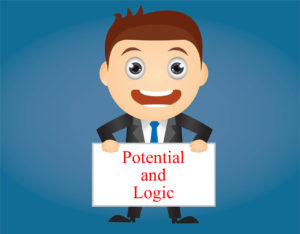
INTUITIVE and Reasoning Preference
You connect and remember information through WHAT’S POSSIBLE and YOUR HEAD. Which means your ideal way of accepting and holding on to new information is through getting real and tangible material and connecting it rule and logic.
Some strategies could look like:
- While you are in the class – make sure to be open minded and ask questions that explore ideas and potential. The information needs to be trustworthy and value the big picture.
- While learning new information – make sure the information inspires new ideas and opportunities, you are as interested in what could be, as you are in what is there now.
- Sometimes cold logic and reason can give us structure; logic is about trying to figure out the rules of life, if we can find a way to fit new information into these rules, we cam retain and recall the information much easier.
Quiz #4
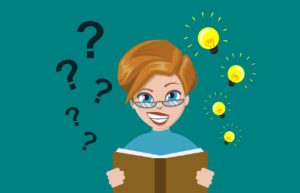
ANALYTICAL Preference
You apply new information best through IMPROVING WHAT YOU KNOW. Which means your ideal motivation for learning is to improve your current actions and processes.
Some strategies could look like:
- When starting your learning journey, make sure you understand what skills or processes you are trying to improve and having a specific goal in mind of what success looks like.
- Your goal is to add to your knowledge and skills, so make sure you have a true understanding of your skills and current understanding before you start.
- Make sure your learning is productive and you can identify what benefit you received at the end.
- One of the best ways to do this is trying to predict what value and challenges you will experience before you start.

Creative Preference
You apply new information best through BEING INSPIRED TO THINK DIFFERENTLY. Which means your ideal motivation for learning is to be challenged with new ideas and insight.
Some strategies could look like:
- When starting your learning journey, make sure you are aware of the areas you are looking to be inspired by. Know which areas you are looking to improve and which areas you are more confident in.
- Your goal is to find a new way of thinking or doing something, so stay as flexible and open to new possibilities.
- You may find comfort in knowing that creativity often happens on its own timeline, it can be difficult to force, so do not get discouraged if it takes longer than you expected.
- One great way to do this is to retain as much “random” information as you can, because once inspiration hits, it makes connecting the dots and coming up with solutions much easier.

Practical Preference
You apply new information best through SOLVING PRACTICAL PROBLEMS. Which means your ideal motivation for learning is to look for practical uses and solutions that you can use immediately.
Some strategies could look like:
- When starting your learning journey, make sure you understand what problem or action you can solve by utilizing the new information.
- Your goal is to apply the learning to solve a real-world problem or find a practical use for what you can learn.
- Make sure your learning is practical and measurable, once you got what you need, did you find the improvement you where looking for?

Collaborative Preference
You apply new information best through ADDING VALUE TO A GROUP. Which means your ideal motivation for learning is to find success from working with or helping others.
Some strategies could look like:
- When starting your learning journey, make sure you understand what your role or purpose is within the group.
- Your goal is to complement the existing skills and experiences, so clearly knowing what the group needs will clarify what you need to learn.
- Make sure your learning is both relevant and actionable, but also adaptable and supportive.
- One of the best ways to do this is to look for opportunities to keep your collaborators’ expertise and insights in mind while in the learning process, include them throughout if possible.
